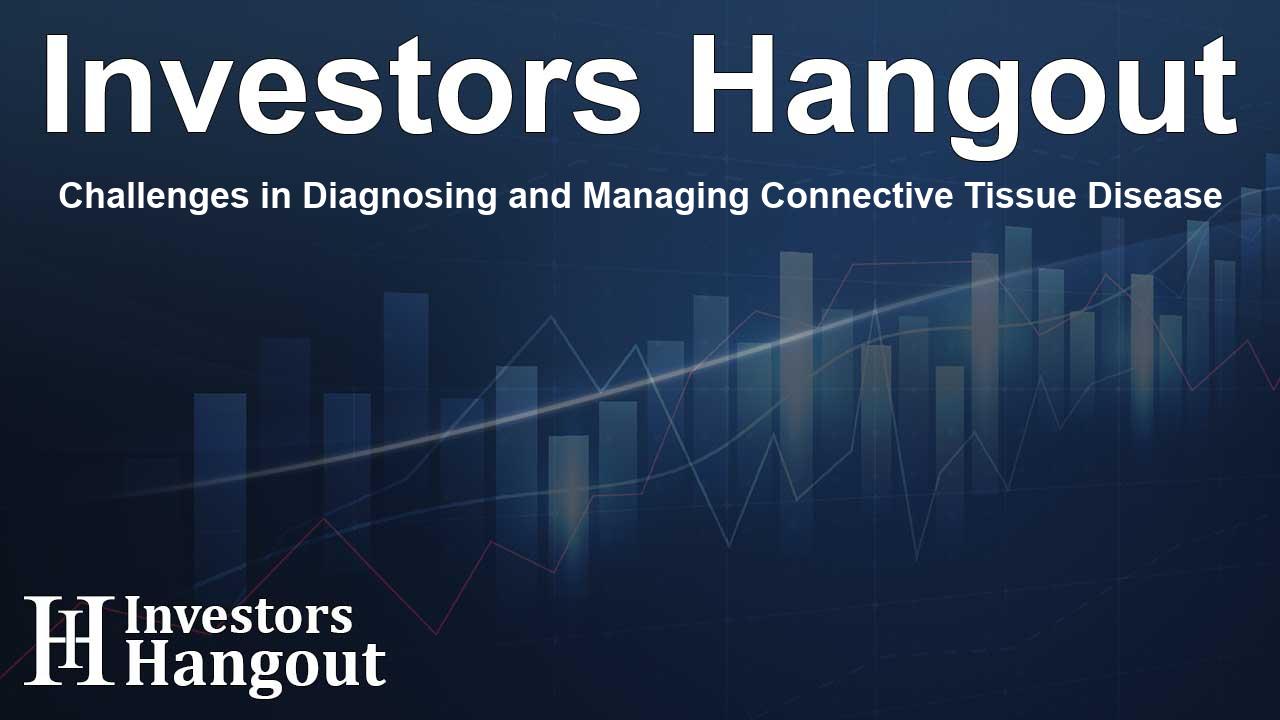Challenges in Diagnosing and Managing Connective Tissue Disease

Understanding the Diagnosis Dilemma in CTD-ILD
A recent report from Spherix Global Insights highlights the significant hurdles faced by rheumatologists and pulmonologists when it comes to diagnosing and managing connective tissue disease-associated interstitial lung disease (CTD-ILD). This condition, particularly systemic sclerosis (SSc) and myositis (IIM), poses unique challenges, creating a pressing need for improved diagnostic techniques and management strategies.
The Misdiagnosis and Diagnostic Challenges
The report, which gathered insights from a survey of specialists, indicates a worrying trend of misdiagnosed cases within the CTD-ILD community. Many physicians express that nearly one-third of patients could remain undiagnosed or misdiagnosed, with both rheumatologists and pulmonologists identifying differential diagnosis as a major obstacle. A shortage of specific biomarkers, logistical issues surrounding biopsies, and symptom overlap are primary factors complicating accurate diagnosis.
A rheumatologist quoted in the report notes, "The most definitive test is invasive. It is difficult to find clinicians willing to perform it promptly, and convincing the patient can be a challenge." Similarly, pulmonologists face obstacles when attempting to reach an accurate diagnosis, with logistics often hindering timely biopsies.
Managing CTD-ILD: Limited Treatment Options
Once a patient is diagnosed, they are frequently met with a treatment landscape that offers limited options for effectively managing disease progression. Specialists have highlighted the most pressing management issues as the lack of adequate and targeted therapies for conditions like SSc-ILD and myositis-ILD, which received the highest unmet need scores among treatments.
SSc-ILD presents a particularly difficult therapeutic dilemma as it exhibits aggressive progression and poor long-term outcomes. Patients with diffuse cutaneous systemic sclerosis (dcSSc) face restricted use of corticosteroids due to a considerable risk of renal crisis, leaving physicians with only a narrow range of anti-fibrotic and immunosuppressive options that may provide only modest efficacy.
Emerging Therapies and the Future Outlook
Despite the limited satisfaction with current treatment agents, there’s cautious optimism surrounding potential future therapies. For example, while Boehringer Ingelheim’s nintedanib is approved for SSc-ILD, physicians believe its impact on halting disease progression may not be significant in treating the underlying autoimmune pathology. Other common treatments like mycophenolate mofetil and rituximab may have inconsistent performance, highlighting the trial-and-error nature of current treatment plans.
There is a growing demand for dual-acting agents that can tackle both systemic autoimmune responses and pulmonary fibrosis. This need is acutely felt in cases of systemic lupus erythematosus-associated ILD (SLE-ILD), where rheumatologists are increasingly interested in GSK’s Benlysta (belimumab). Although not currently approved for ILD, the drug's immunological properties raise hopes for it to manage pulmonary manifestations effectively.
Shifting the Treatment Paradigm
Moving forward, specialists stress that what’s needed is not just another treatment but a comprehensive change in how CTD-ILD is managed. As one physician aptly put it, the focus should be on treating the patient holistically rather than merely addressing the lungs. This reflects a broader understanding of the intricate relationship between various body systems in managing interstitial lung diseases associated with connective tissue disorders.
Insights into Pipeline Therapies
The Spherix report assesses various promising pipeline therapies, including Benlysta, BMS-986278 from Bristol Myers Squibb, Nerandomilast by Boehringer Ingelheim, and Treprostinil from United Therapeutics. These evaluations aim to provide pharmaceutical manufacturers with pertinent insights regarding clinical expectations and market positioning in an increasingly intricate treatment landscape for ILD.
Frequently Asked Questions
What are the main challenges in diagnosing CTD-ILD?
The main challenges include differential diagnosis, a shortage of specific biomarkers, logistical issues surrounding biopsies, and overlapping symptoms.
Why is SSc-ILD particularly challenging to treat?
SSc-ILD is connected with rapid disease progression and serious outcomes, compounded by restrictions on corticosteroid use due to renal crisis risk.
What is the general physician sentiment regarding current treatments?
Many physicians express dissatisfaction with current treatment options, indicating they are limited and often involve trial and error.
Are there any new therapies on the horizon for CTD-ILD?
Yes, there is growing interest in dual-acting agents and several pipeline therapies are under evaluation, aiming to address both autoimmune and pulmonary elements of the disease.
What future direction do specialists believe is necessary for managing CTD-ILD?
Specialists advocate for a holistic approach to treatment, aiming to address the complexities of CTD-ILD rather than focusing solely on lung symptoms.
About The Author
Contact Ryan Hughes privately here. Or send an email with ATTN: Ryan Hughes as the subject to contact@investorshangout.com.
About Investors Hangout
Investors Hangout is a leading online stock forum for financial discussion and learning, offering a wide range of free tools and resources. It draws in traders of all levels, who exchange market knowledge, investigate trading tactics, and keep an eye on industry developments in real time. Featuring financial articles, stock message boards, quotes, charts, company profiles, and live news updates. Through cooperative learning and a wealth of informational resources, it helps users from novices creating their first portfolios to experts honing their techniques. Join Investors Hangout today: https://investorshangout.com/
The content of this article is based on factual, publicly available information and does not represent legal, financial, or investment advice. Investors Hangout does not offer financial advice, and the author is not a licensed financial advisor. Consult a qualified advisor before making any financial or investment decisions based on this article. This article should not be considered advice to purchase, sell, or hold any securities or other investments. If any of the material provided here is inaccurate, please contact us for corrections.
